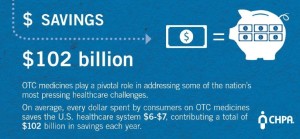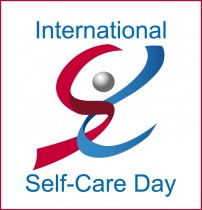 Make-over your medicine cabinet. That’s a key headline for International Self-Care Day (ISD) on July 24, 2014, an initiative promoting the opportunity for people to take a greater role in their own health care and wellness.
Make-over your medicine cabinet. That’s a key headline for International Self-Care Day (ISD) on July 24, 2014, an initiative promoting the opportunity for people to take a greater role in their own health care and wellness.
Sponsored by the Consumer Healthcare Products Association (CHPA), consumer products companies, health advocacy organizations, and legislators including John Barrow (D-GA), a co-sponsor of H.R. 2835 (aka the Restoring Access to Medications Act), the Day talked about the $102 billion savings opportunity generated through people in the U.S. taking on more self-care through using over-the-counter medicines.
After the 2008 Recession hit the U.S. economy, industry analysts predicted the start of a new era for OTC-switch – turbocharging the movement of prescription drugs to over-the-counter status to remedy medical-economic stress. This hasn’t happened as quickly as those forecasts expected. 
Health Populi’s Hot Points: The $102 bn price tag on self-care savings to the U.S. macroeconomy translates into real dollars for consumers who can avoid overtreatment in the health “care” system by doing more at-home.
With the growth of high-deductible health plans coupled with HSAs in the U.S., employers and health plans are shifting more financial risk to enrollees. This risk-shift from sponsors to people puts them into the role of de facto health care “consumers.”
Most people say they want to embrace DIY-style health care through e-health channels like health information-seeking online, re-filling prescriptions via ePrescribing using mobile health apps, and making appointments online. These are largely administrative burdens that the health system is happy for people to take on, saving labor costs for health plans, pharmacies and delivery systems.
 But what about greater clinical care decisions? So far in the OTC world, consumers have happily migrated (as expressed through $ migration) to over-the-counter products to manage allergy and gut issues. See the success of Claritin and Zyrtec on the allergy front, and Prilosec and Pepcid AC for taking care of GI issues as first-line treatment. When I go to Europe, I might buy a statin over-the-counter in a pharmacy in the UK or metformin in a Spanish farmacia or an apotheke in Germany. In the U.S., this isn’t possible…today.
But what about greater clinical care decisions? So far in the OTC world, consumers have happily migrated (as expressed through $ migration) to over-the-counter products to manage allergy and gut issues. See the success of Claritin and Zyrtec on the allergy front, and Prilosec and Pepcid AC for taking care of GI issues as first-line treatment. When I go to Europe, I might buy a statin over-the-counter in a pharmacy in the UK or metformin in a Spanish farmacia or an apotheke in Germany. In the U.S., this isn’t possible…today.
However, more pharmaceutical companies note that the consumer-side of their balance sheets could add value to lagging branded pharmaceutical portfolios and maturing brands. Look for spin-offs of such businesses, as Andrew Witty of GSK says he’s considering this week, as well as the growth of switch from Rx-to-OTC to generate cash opportunities — and greater consumer engagement through self-care in retail channels. Health care consumerism and peoples’ interest in shared decision-making in health care is growing: 9 in 10 U.S. adults say they want a role in decision making with their doctors in Altarum’s most recent consumer survey.
Under these circumstances and realities, it is irrational for PPACA to have eliminated the OTC provision for health savings accounts. This is what CHPA has called the “medicine cabinet tax.” For Americans to become fully engaged as health care consumers, it makes fiscal and rational sense to allow taxpayers to use OTCs as part of HSAs — to bolster healthcare personal financial management.




 Interviewed live on BNN Bloomberg (Canada) on the market for GLP-1 drugs for weight loss and their impact on both the health care system and consumer goods and services -- notably, food, nutrition, retail health, gyms, and other sectors.
Interviewed live on BNN Bloomberg (Canada) on the market for GLP-1 drugs for weight loss and their impact on both the health care system and consumer goods and services -- notably, food, nutrition, retail health, gyms, and other sectors. Thank you, Feedspot, for
Thank you, Feedspot, for  As you may know, I have been splitting work- and living-time between the U.S. and the E.U., most recently living in and working from Brussels. In the month of September 2024, I'll be splitting time between London and other parts of the U.K., and Italy where I'll be working with clients on consumer health, self-care and home care focused on food-as-medicine, digital health, business and scenario planning for the future...
As you may know, I have been splitting work- and living-time between the U.S. and the E.U., most recently living in and working from Brussels. In the month of September 2024, I'll be splitting time between London and other parts of the U.K., and Italy where I'll be working with clients on consumer health, self-care and home care focused on food-as-medicine, digital health, business and scenario planning for the future...